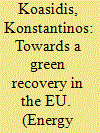| Srl | Item |
| 1 |
ID:
110717


|
|
|
|
|
| Publication |
2011.
|
| Summary/Abstract |
Despite the growing interest in Small Medium sized Power Plants (SMPP) international literature provides only studies related to portfolios of large plants in infinite markets/grids with no particular attention given to base load SMPP. This paper aims to fill this gap, investigating the attractiveness of SMPP portfolios respect to large power plant portfolios. The analysis includes nuclear, coal and combined cycle gas turbines (CCGT) of different plant sizes. The Mean Variance Portfolio theory (MVP) is used to define the best portfolio according to Internal Rate of Return (IRR) and Levelised Unit Electricity Cost (LUEC) considering the life cycle costs of each power plant, Carbon Tax, Electricity Price and grid dimension.
The results show how large plants are the best option for large grids, while SMPP are as competitive as large plants in small grids. In fact, in order to achieve the highest profitability with the lowest risk it is necessary to build several types of different plants and, in case of small grids, this is possible only with SMPP. A further result is the application of the framework to European OECD countries and the United States assessing their portfolios.
|
|
|
|
|
|
|
|
|
|
|
|
|
|
|
|
| 2 |
ID:
187612


|
|
|
|
|
| Summary/Abstract |
To tackle the negative socioeconomic implications of the COVID-19 pandemic, the European Union (EU) introduced the Recovery and Resilience Facility, a financial instrument to help Member States recover, on the basis that minimum 37% of the recovery funds flow towards the green transition. This study contributes to the emerging modelling literature on assessing COVID-19 vis-à-vis decarbonisation efforts, with a particular focus on employment, by optimally allocating the green part of the EU recovery stimulus in selected low-carbon technologies and quantifying the trade-offs between resulting emissions reductions and employment gains in the energy sector. We couple an integrated assessment model with a multi-objective linear-programming model and an uncertainty analysis framework aiming to identify robust portfolio mixes. We find that it is possible to allocate recovery packages to align mitigation goals with both short- and long-term energy-sector employment, although over-emphasising the longer-term sustainability of new energy-sector jobs may be costlier and more vulnerable to uncertainties compared to prioritising environmental and near-term employment gains. Robust portfolios with balanced performance across objectives consistently feature small shares of offshore wind and nuclear investments, while the largest chunks are dominated by onshore wind and biofuels, two technologies with opposite impacts on near- and long-term employment gains.
|
|
|
|
|
|
|
|
|
|
|
|
|
|
|
|